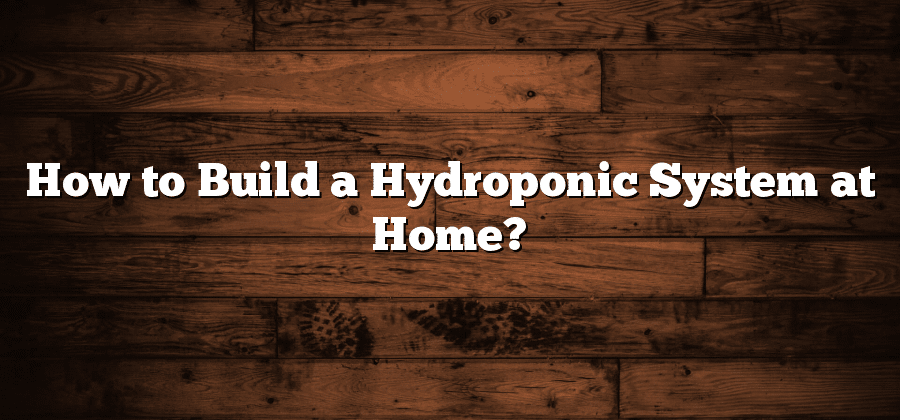Advantages of Hydroponic Systems
Hydroponic systems offer a range of advantages that make them increasingly popular among home gardeners and commercial cultivators alike. One of the key advantages is the ability to grow plants in a soil-less environment. This not only eliminates the need for traditional gardening techniques, such as tilling and weeding, but also prevents the introduction of soil-borne pests and diseases. Additionally, hydroponic systems allow for precise control over essential factors like water, nutrients, and light, resulting in accelerated plant growth and increased yields.
Another advantage of hydroponic systems is the efficient use of resources. With traditional soil-based gardening, a significant amount of water is lost through evaporation and runoff. In contrast, hydroponic systems recirculate water, ensuring minimal wastage. Moreover, by providing direct access to nutrients, plants in hydroponic systems can absorb them more efficiently, leading to reduced fertilizer usage. This not only benefits the environment by preventing excess nutrients from leaching into water systems but also lowers cultivation costs for growers. Overall, the advantages of hydroponic systems make them a promising alternative for those seeking a more sustainable and high-yielding method of cultivation.
Choosing the Right Hydroponic System
When it comes to choosing the right hydroponic system, there are several factors to consider. One of the main considerations is the size of the system that you want to set up. If you have limited space, you may opt for a smaller system like a vertical or a tabletop hydroponic system. On the other hand, if you have ample space available, you can consider larger systems such as nutrient film technique (NFT) or deep water culture (DWC) systems.
Another important factor to consider when choosing a hydroponic system is the crops that you want to grow. Certain plants have specific requirements in terms of nutrients, water, and light. For example, leafy greens like lettuce and spinach prefer a constant flow of oxygenated water, so an NFT system may be a good choice. On the other hand, fruiting plants like tomatoes and peppers require more space for their root systems and may benefit from a DWC system. Therefore, it is essential to research the specific needs of the crops you intend to cultivate to make an informed decision on the type of hydroponic system that will best suit your needs.
Selecting the Ideal Location for Your Hydroponic System
When selecting the ideal location for your hydroponic system, there are several factors to consider. Firstly, it is important to choose a space that receives ample sunlight throughout the day. This is because light is essential for the growth and photosynthesis of plants. Look for an area that is free from obstructions such as tall trees or buildings that may cast shadows and prevent the plants from receiving sufficient light. Additionally, the location should have good ventilation to promote air circulation and prevent the build-up of humidity, which can lead to the growth of mold and other plant diseases. Adequate airflow will also prevent the plants from becoming too warm, especially during hot summer months. Ideally, the location should have access to a power supply for the proper functioning of hydroponic equipment, such as lights, pumps, and timers. Ensure that the power outlets are easily reachable and have the capacity to handle the electrical load required by your system. Lastly, consider the convenience of the location. Choose a spot that is easily accessible and allows for easy monitoring and maintenance of your hydroponic system.
Gathering the Essential Materials for Your Hydroponic System
Obtaining the necessary materials for your hydroponic system is a crucial step in ensuring the success of your cultivation endeavors. To start, you will need to procure a suitable container or reservoir to hold the nutrient solution. This container should be made of a non-toxic material such as food-grade plastic, and it should have a lid to prevent evaporation. Additionally, you will need a water pump and tubing to create a circulation system that delivers the nutrient solution to the plants.
Next, it is essential to acquire a reliable grow light to provide the necessary artificial illumination for your hydroponic plants. LED grow lights are an excellent choice as they are energy-efficient, emit minimal heat, and offer a broad spectrum of light for optimal plant growth. Other materials to gather include pH testing kits and nutrient solutions specifically formulated for hydroponic use. These solutions contain all the essential nutrients required for plant growth and can be adjusted to achieve optimal pH levels. By gathering these materials, you are on your way to setting up a well-equipped hydroponic system that will enable you to cultivate healthy and thriving plants.
Preparing the Growing Medium for Hydroponic Cultivation
When it comes to hydroponic cultivation, the growing medium plays a crucial role in the success of your plants. Unlike traditional soil-based gardening, where nutrients are found naturally in the soil, hydroponics relies on a carefully prepared growing medium to provide the necessary support and nutrition for plant growth. The choice of growing medium is vast, ranging from perlite and rockwool to coco coir and vermiculite. Each medium has its own unique characteristics and benefits, so selecting the right one for your hydroponic system is essential.
One popular option for hydroponic growing mediums is perlite, a volcanic rock that has been heated and expanded to create lightweight, porous granules. Perlite has excellent drainage properties, allowing water to flow freely through the medium while still retaining enough moisture for root absorption. This helps prevent waterlogging, a common issue in hydroponics that can lead to root rot and plant stress. Additionally, perlite is an inert material, meaning it does not contribute any nutrients to the plants. This allows for precise control over the nutrient solution, as all the required elements must be provided through hydroponic fertilizer.






